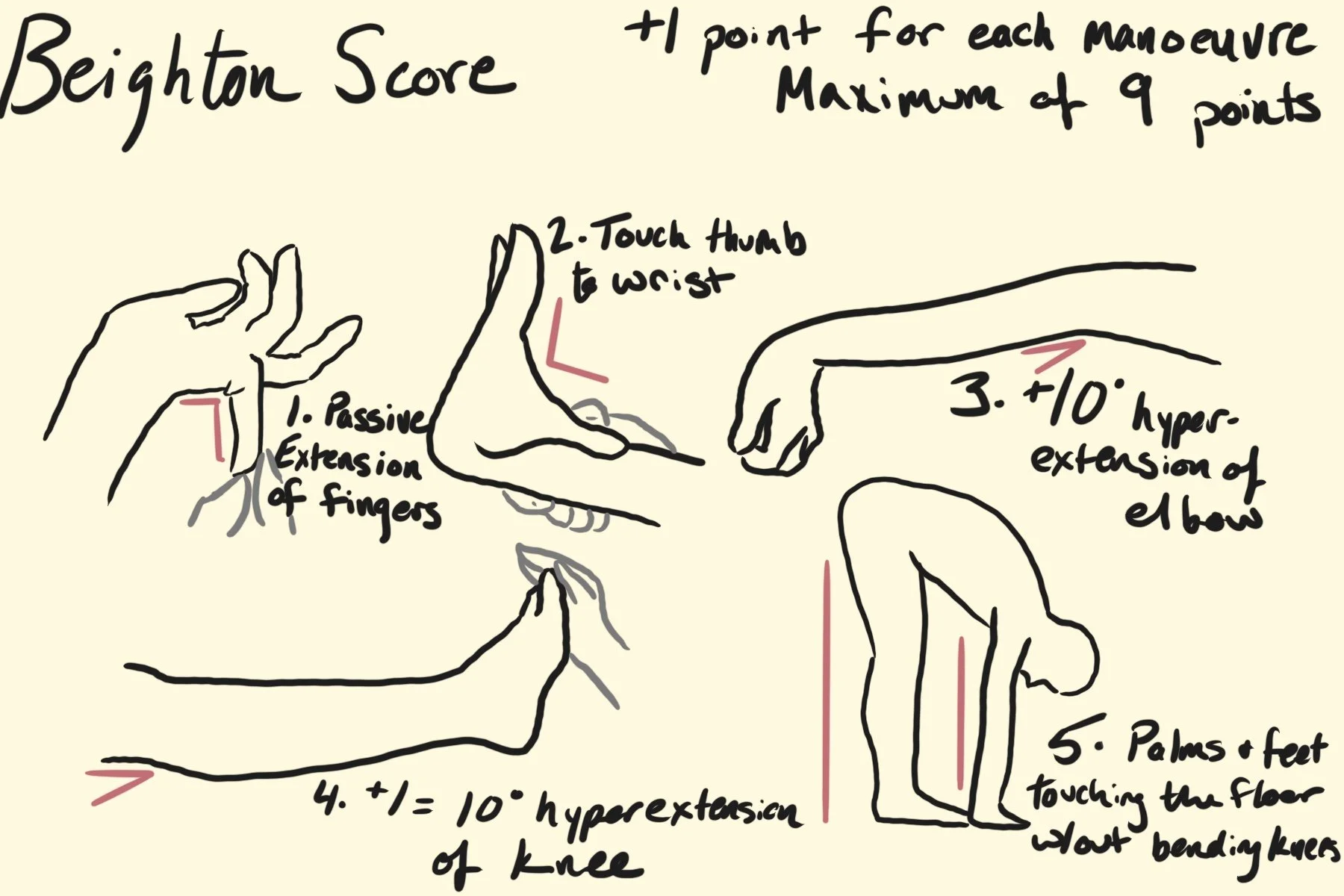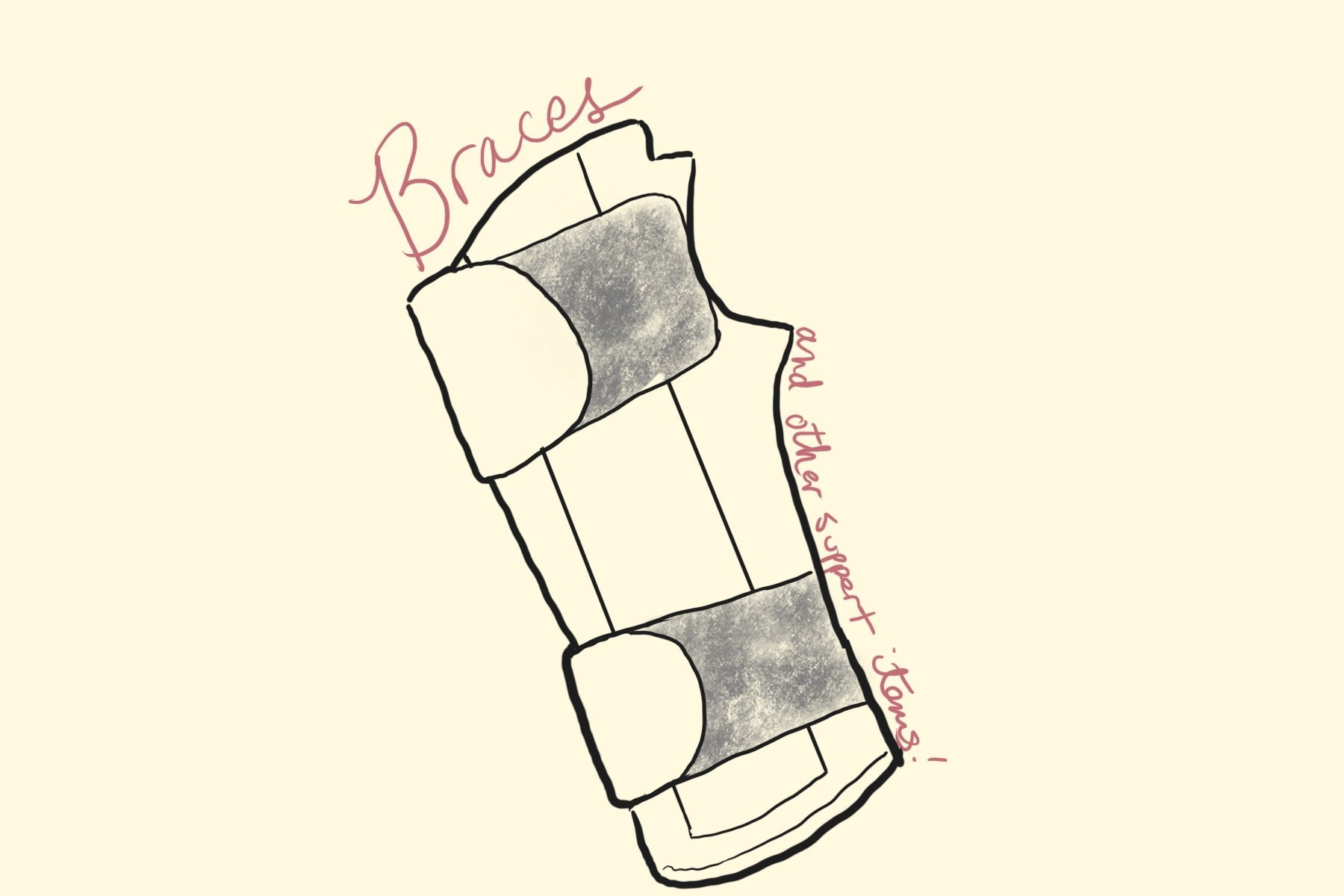Sewing with Hyper-Mobility
The month of May is Ehlers-Danlos Syndrome and Hyper-Mobility Spectrum Disorder Awareness month, or EDS and HSD Awareness Month for short. That’s a lot of words so I’ll do my best to break it down in simpler terms.
Necessary disclaimer here: I am not a medical professional. Anything I write here today is based off my research and my personal experiences with hyper-mobility. This is not a comprehensive or scientific write-up, just my two cents and a run down of what works for me.
So what is Ehlers-Danlos Syndrome (EDS)? It’s a group of thirteen connective tissue disorders the effect the normal structure of connective tissues in the body like collagen. These disorders are generally characterized by instability in the joints and joint dislocations, extra-stretchy skin, scoliosis, and tissue weaknesses in the gums, bowel, and blood vessels. Pain and fatigue are common symptoms. There has been growing research into EDS, but there is still a lot that’s unknown as to the genetic cause and proper treatment. Diagnosing EDS is difficult, as the testing to properly diagnose it is challenging to find.
There is also Hyper-Mobility Spectrum Disorder (HSD). EDS and HSD have some overlap, but people with HSD don’t present with tissue weakness in the gums, bowels, and blood vessels. People with HSD also don’t present with symptoms of other connective tissue disorders. However, pain and fatigue are still common symptoms.
But, Madeline, you say. What is hyper-mobility? Let me explain. Hyper-mobility in the joints is caused by loose or relaxed connective tissue. The thick bands of tissue that hold your body together are tendons and ligaments. Hyper-mobile joints can move beyond the normal range of motion - think of the term “double-jointed”. How to tell if you’re hyper-mobile? You might already know if people ask you to perform party tricks with your weirdly flexible body parts, or there is a test known as the Beighton Scale. With the Beighton Score, you get one point for each thing you can successfully do. There is a maximum of nine points, with a score of four or five generally being regarded as hyper-mobile.
Not everyone who is hyper-mobile experiences pain. About 10% - 15% of the population is hyper-mobile. That said, being hyper-mobile can cause issues. A doctor explained it to me like this: because your brain doesn’t think your body has limits, your body can do what it wants. In doing what it wants, it can cause damage to the already stretchy connective tissue and the tissues around it. This damage causes inflammation and pain. It’s like a continuous injury or a repeated stress injury. Gradually, this causes more and more pain in the hyper-mobile joints.
I’ve got a Beighton Score of about 4.5. My hands and wrists are hyper-mobile which can cause pain. Unfortunately, my chosen career/hobby is hard on my hands. If you sew or craft, you know how challenging it can be to hold your hands in a weird way to finish a task or to repeat the same task over and over again. Even if you don’t deal with chronic pain, sometimes crafting hurts. Here’s how I work around that to the best of my abilities.
Compression gloves are my first line of defense. If I know I’m doing something that’s rough on my hands - lots of basting, pad-stitching, finicky hand-stitching - then I put on my compression gloves. I have two pairs. One is a softer, less compressive pair from Joann’s. They’re not much, but they hold all my wobbly joints in place. I’ll wear these if I’m typing a lot as well (in fact, I should go find them). My other pair is from Copper Fit, and they’re probably meant for hard-core athletes. That’s never been me, but I’ll go for these pair if I’m already having a pain day or if I’m really pushing myself to finish a task. These cover a lot more than the Joann’s ones and it’s a stronger level of compression.
If I need to, I get my braces out. I have a brace for each wrist and one for my right elbow. I’ll use the wrist braces at the end of a long day, and I’ll typically sleep with them on. That way, I give my body a chance to rest in a natural position, and I don’t do something stupid, like injure myself by sleeping on my wrist wrong. I’ll use the elbow brace if I’m cutting out a lot of fabric. This prevents pain in my elbow while I cut. Some people use spring-loaded scissors or a rotary cutter to prevent elbow pain.
Sometimes there’s nothing for it but to rest. I try to take breaks during my normal working day, but sometimes I’m busy or get too wrapped up in what I’m doing. My body will tell me, rather forcefully, when I need to take a break.
There are lots of options for working with something like hyper-mobility. I’ve gone over what works for me, but what works for someone else could be totally different. I hope this has helped someone on their chronic pain journey, or that it was somewhat interesting for you. I’ve linked a couple more scientific takes on EDS and HSD below, so go check those out for a more comprehensive take on things. Until next time, and stay tuned, dear reader.
Yours sincerely,
Madeline



